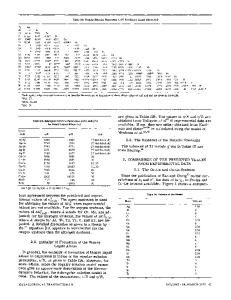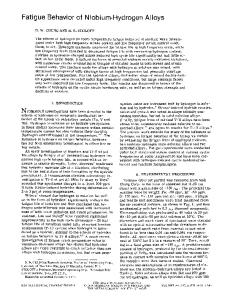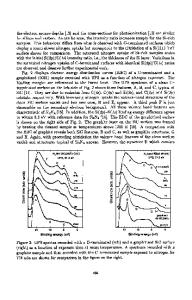Interaction behavior of nitrogen in liquid niobium
- PDF / 961,923 Bytes
- 9 Pages / 603.28 x 783.28 pts Page_size
- 30 Downloads / 361 Views
1 0 3 e x p ( ~- T )
aV (C2~ - C 2 )
with the value of Q calculated to be - 3 2 7 . 2 - 20.6 kJ/mol, while nitrogen desorption at 2670 ~ follows the relation dCN _ 1.820 • 10 -3 A (C2o _ C2 ) dt V
I.
INTRODUCTION
T H E unique combination of properties, such as relatively low density, high melting point, ease of fabricability, and high superconducting transition temperature, makes Nb and its alloys attractive candidate materials in a variety of applications. Nb-Ti alloys and Nb intermetallics like Nb3Sn, Nb3Ge, and Nb3A1 are used as superconductors in a wire form. t~-4~ Recently, there has been an increase in the research activity for the development of Nb-base alloys for high-temperature structural applications, t5,6,7~In addition, Nb is a beneficial alloying additive for improving the ductility of advanced intermetallics like Ti3AI. tll However, Nb and Nb-base alloys have a great affinity for interstitial elements like N, O, H, and C. Thus, a considerable amount of interstitials is dissolved even under high vacuum, with a significant effect on the physical and mechanical properties of these materials. For example, the room-temperature electrical resistivity of Nb increases linearly with nitrogen and oxygen content, corresponding to a relative increase of 30 pct/at, pct nitrogen or oxygen disso!yed.[8] Conventional production of high-pm?i."ty niobium is carried out by the reduction of Nb205 via carbothermic or aluminothermic reaction followed by refining through electrolysis, zone refuting, or in most cases, electron beam remelting in vacuum, t2'91 Efficient refining and control of the interstitial content during melting requires a fundamental understanding of the interaction processes occurring between the gas phase and liquid Nb. H.G. PARK, Graduate Student, A.B. GOKHALE, Research Associate, and R. ABBASCHIAN, Professor and Chairman, are with the Department of Materials Science and Engineering, University of Florida, Gainesville, FL 32611. P. KUMAR, Senior Scientist, is with Cabot Corporation, Boyertown, PA 19512. Manuscript submitted October 23, 1989. METALLURGICAL TRANSACTIONS B
Unfortunately, the high melting point of Nb (2468 ~ precludes the use of a majority of the conventional experimental techniques used to study such processes. As a result, little fundamental data on the interaction of interstitials with liquid Nb are available at present. The limitations of conventional techniques were circumvented in the present study by carrying out all experiments in an electromagnetic (EM) levitation apparatus shown schematically in Figure 1 and described elsewhere, tgj Electromagnetic levitation is particularly suited for this purpose since this containerless processing method eliminates impurity pickup from container walls and mold chill effects. Also, the high melting temperature of Nb is not a serious constraint since heat generation takes place due to eddy current losses inside the sample. Furthermore, the system offers the advantages of rapid heating under various gas atmospheres, followed by rapid quench
Data Loading...











